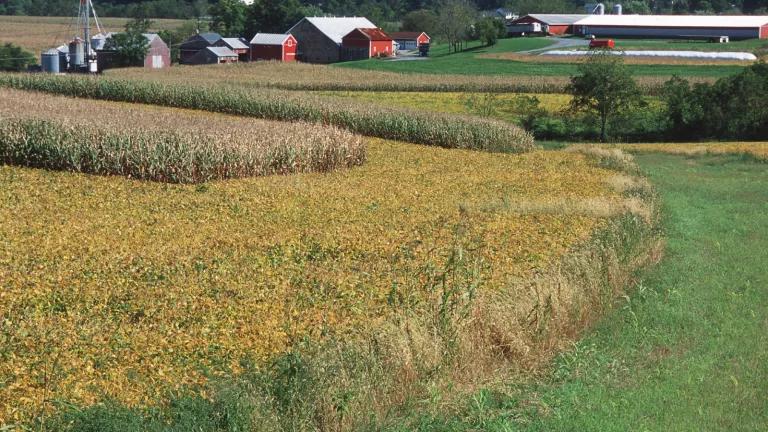How Healthy Soil Can Help Reduce Harmful Algal Blooms
Why are there too many nutrients in the water? Mostly because we are putting too many nutrients onto the land.

Cover crops and strip-cropping improve soil health and prevent farm runoff that causes algal blooms.
It’s been a bad summer for harmful algal blooms (HABs) – the visible, toxic result of a form of pollution caused by too much nitrogen (N) and phosphorus (P) running off land and into the water.
Plants don’t grow without N and P, but in the case of nutrient pollution, there can be way too much of a good thing. I remember the explanation of eutrophication from my high school science class; when there are too many nutrients in the water, it causes a growth spurt (or “bloom”) of excessive algae and bacteria. The algae block out sunlight, the bacteria deplete the oxygen, and that burst of life ends up overconsuming and killing all the aquatic life. Not only that, the blooms and bacteria produce toxins that are dangerous to human and animal health.
So why are there too many nutrients in the water? Mostly because we are putting too many nutrients onto the land. Excess fertilizer and manure from farmland are huge sources of nutrient pollution. We put about 40 times more nitrogen on land now than we did before World War II, when modern fertilizers were developed as a by-product of chemical warfare. As CAFOs increase in number, more and more manure is applied to the land and that excess phosphorus from the manure mucks up lakes. All that N and P washes off the farmland and into the rivers and lakes, the nutrient polluted-rivers run to coastal waters, and the HABs turn into massive marine dead zones the size of a state.
Too many CAFOs and too much manure on farmland is one problem. Too much fertilizer on the land is another; fortunately, we have in-hand solutions to cropland and fertilizer runoff, they just need to be applied across the whole landscape and not just a tiny piece of it. The solution is in the soil; farms that are managed for good soil health are also better for water quality.
There’s a pile of evidence that shows better soil health and cover crops reduces nutrient pollution, so you don’t have to take my word for it. Check out these studies, especially the video presentation on dissolved reactive phosphorus (the big culprit exacerbating harmful algae blooms in lakes) and soil health in the last bullet.
- A 2018 analysis in the Journal of Environmental Quality found that cover crops reduce nitrate leaching by 56% on average. (Leaching is when nitrates sort of leak down through the soil into ground water)
- The Indiana Shatto Ditch watershed study found 30-40% reductions in nitrate and phosphorus from water draining from fields after planting cover crops on 70% of cropland acres in the watershed.
- Ohio State University research shows that fields cultivated with no-till and lots of cover crops allow water to filter into soil 4 times faster than bare fields; that means less phosphorus running off into streams and dissolving into reactive forms of phosphorus that drive algae blooms.
Healthy soil and clean water go hand in hand. That’s why we’re working so hard on creating more policy incentives for farmers to improve soil health. In the meantime, you can make a difference by learning more about farm policy and finding out how your food is grown. We want to work together with farmers and find a way to grow food that doesn’t endanger our water supply.




